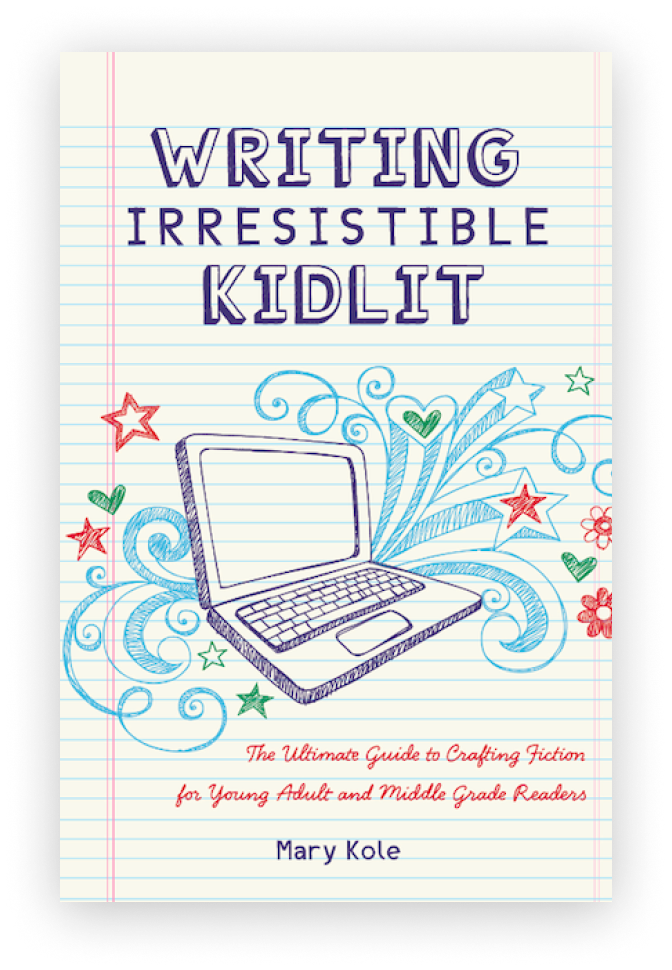Using Narrative Structure in
Your Novel
By Mary Kole
Mary Kole is a former literary agent, freelance editor, writing teacher, author of Writing Irresistible Kidlit, and IP developer for major publishers, with over a decade in the publishing industry.
Writing a novel requires more than just a knack for stringing 60,000 words together. A well-written novel should impact readers emotionally, making them feel like they are a part of the story. It should make readers care. Crafting a compelling narrative structure is key to achieving this. To help you master this technique, I’ve created a comprehensive guide that covers everything you need to know about narrative structure—from what it is to common mistakes writers make and how to avoid them.
What is Narrative Structure?
Narrative structure is the story framework of events and actions that provide the context for a story. It’s the overarching architecture that encompasses everything in the story, from the plot arc to character development to world-building and setting. A good narrative structure ensures that all elements of the story work together to create an emotional impact on the reader.
Ingredients of Narrative Structure
The ingredients of narrative structure are the building blocks that make up the story. These include the setting, characters, plot, point of view, and theme. Every component is essential to creating a complete and cohesive story, and they need to be related to one another in a cause-and-effect way. You will need to think about the beginning, middle, and end, at minimum, but sometimes a novel outline can encompass twenty pages and even go scene by scene. When crafting your narrative structure, it’s important to ensure that all these elements function together effectively to create a compelling story. A lot of contemporary stories are character-driven, which means that the choices you make about your character development all need to link to your plot.
How to Execute Narrative Structure for Maximum Emotional Impact
The key to executing a narrative structure for maximum emotional impact is to know your target audience and write to their expectations. For instance, a romance novel will have a different narrative structure than a thriller or a science-fiction novel. Once you’ve identified your target audience, crafting a narrative structure that is relatable to them is vital. Similarly, focus on establishing emotional connections with your characters by giving them an objective, motivation, and high stakes for doing what they’re doing in relation to your plot. This allows readers to become invested in the story, thus bolstering the emotional impact.
Character and Action Beats Expected in Terms of Narrative Structure
It’s essential to understand the character and action beats expected in narrative structure. These beats refer to the critical points that occur within the story, where a character pursues their objective or gets into conflict with another character. Plot points such as the inciting incident, rising action, midpoint, story climax, and the resolution need to be clear anchors in your narrative. Knowing how to craft these beats effectively is imperative to ensure that the story develops in a way that’s going to make readers care.
Common Mistakes Writers Make with Narrative Structure
One common mistake writers make with narrative structure is inserting unnecessary information that detracts from the story’s focus. This could be backstory, or writing imagery, but when it doesn’t work, it disrupts the balance of action and information. Another common mistake is using too much exposition and violating the idea of show, don’t tell. Overall, it’s important to avoid such mistakes and ensure that all elements of the narrative structure are arranged effectively to create the desired effect on your readers.
Crafting a compelling narrative structure is the cornerstone of every successful novel. By understanding how to execute this structure effectively, you can take your readers on an emotional journey that will keep them engaged and invested in the story. Be sure to identify your audience, establish emotional connections with your characters, and maintain a focus on the essential story elements in order to succeed at crafting compelling narrative structure.

Click here to purchase Writing Irresistible Kidlit, my book on fiction craft for MG and YA novels, out from Writer's Digest Books. This will show you my writing craft philosophy and give you lots of valuable advice, including tips for the novel revision process and self-editing. There are over 35 example novels cited and discussed throughout. It’s a valuable resource for any writer’s toolkit.
Click here to purchase Irresistible Query Letters, my book on query letters, including over forty examples with comprehensive notes on each one. There’s a ton of submission advice, best practices, and insider information in these pages, and you’ll really enjoy seeing what other writers are doing in the slush.
Click here to purchase Writing Interiority: Crafting Irresistible Characters, my book on interiority and character creation. Explore your protagonist’s thoughts, feelings, reactions and interpretations, expectations, and inner struggles to create a rich, immersive experience. This guide will empower you to create characters who live and breathe on the page, fostering an unbreakable bond with your audience.





